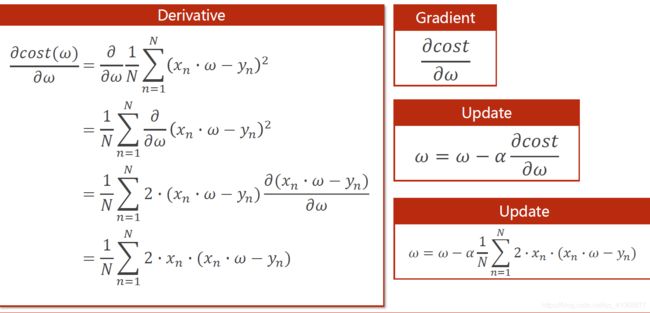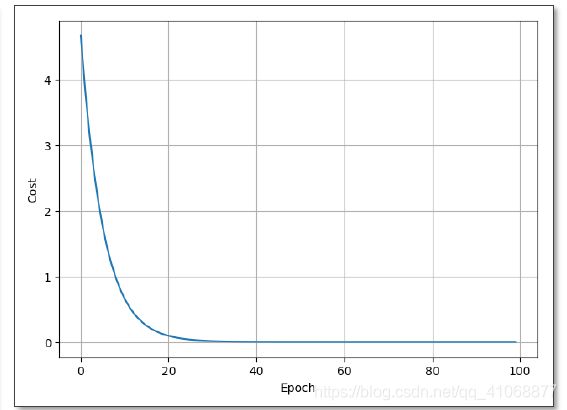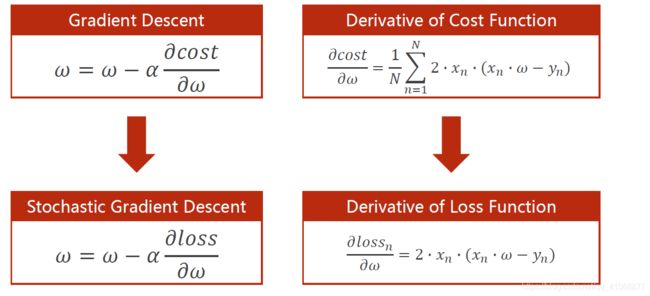《PyTorch深度学习实践》--3梯度下降算法
一、.在第二节中的线性模型中,求解w的最优值(使得MSE最小的w)问题。
从图中可以看出:w=2时,MSE最小。(即最优)
二、求解最优w问题的方法
2.1梯度下降(Gradient Descent)算法:
w按梯度下降方向移动,这样一定次数的移动后就会移动到最优解。
(a为学习因子,影响每次移动的步长,越小越精确但时间复杂度也会变高)
通过求导,可以求出具体的表达式,根据表达式就可以写出代码。
x_data = [1.0, 2.0, 3.0]
y_data = [2.0, 4.0, 6.0]
w = 1.0
def forward(x):
return x * w
#mse
def cost(xs,ys):
cost = 0
for x, y in zip(xs, ys):
y_pred = forward(x)
cost += (y_pred - y) ** 2
return cost/ len(xs)
#梯度
def gradient(xs, ys):
grad = 0
for x, y in zip(xs, ys):
grad += 2*x*(x*w - y)
return grad / len(xs)
print('Predict (before training)',4,forward(4))
for epoch in range(100):
cost_val = cost(x_data, y_data)
grad_val = gradient(x_data, y_data)
w -= 0.01 * grad_val //更新w
print('Epoch:',epoch, 'w=', w, 'loss=', cost_val)
print('Predict (after traning)', 4, forward(4))
(结果应该是收敛的,如果不收敛可能是a值过大。)
2.2 随机梯度下降(Stochastic Gradient Descent )
类似梯度下降,但是这里用的是随机某个样本(而不是整体)的梯度。
这样的好处是由于单个样本一般有噪声,具有随机性,可能帮助走出鞍点从而进入最优解。
坏处是计算依赖上次结果,多个样本x无法并行,时间复杂度高。因此会有一个中间的方法,Mini-Batch(或称Batch)。将若干个样本点分成一组,每次用一组来更新w。
x_data = [1.0, 2.0, 3.0]
y_data = [2.0, 4.0, 6.0]
w = 1.0
def forward(x):
return x * w
#mse,单个样本
def loss(x,y):
y_pred = forward(x)
return (y_pred - y) ** 2
#梯度,单个样本
def gradient(x, y):
return 2*x* (x*w - y)
print('Predict (before training)',4,forward(4))
for epoch in range(100):
for x,y in zip(x_data, y_data):
grad_val = gradient(x, y)
w -= 0.01 * grad_val
print('\tgrad:',x,y,grad_val)
loss_val = loss(x,y)
print("progress:", epoch, 'w=', w, 'loss=', loss_val)
print('Predict (after traning)', 4, forward(4))




